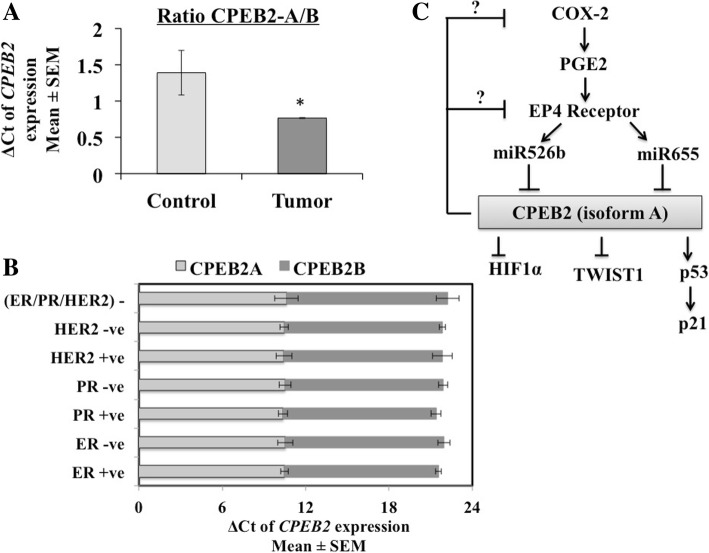Fig. 8.
Expression of CPEB2 isoforms A and B in human breast cancer tissues and non- tumor breast tissues. Expression of CPEB2 isoforms A (measured with an A/E probe) and B (measured with a B/D probe) mRNAs were analyzed by qPCR in105 breast cancer tissues (6 samples failing to amplify expression of GAPDH or CPEB2A were removed from the study) and in 20 control (histologically tumor-free) breast tissues. a The control non-tumor tissues expressed relatively higher expression of isoform A, and lower expression of isoform B than tumor tissues, when normalized for GAPDH. They are plotted as A/B ratios of the delta Ct ± SEM. * indicates p < 0.05. b We measured CPEB2A (with an A/E probe) and CPEB2B (with a B/D probe) mRNA in various tumor subsets, ER+, ER-, PR+, PR-, HER2+, HER2-, ER/PR/HER2- normalized to GAPDH. Data presented as delta Ct ± SEM. No significant difference in the expression of A vs B was noted in any subset. c A schema for molecular partners in CPEB2 regulation and action in breast cancer. COX-2 via EP4 activation upregulates two oncogenic miRNAs miR-526b and miR-655, both of which target CPEB2. Tumor suppressor functions of CPEB2 (resulting from the isoform A) are mediated by multiple partners: translational regulation of p53, HIF-1α and Twist-1 mRNAs. In addition CPEB2 appears to suppress COX-2/EP4 expression by hitherto unknown mechanisms

